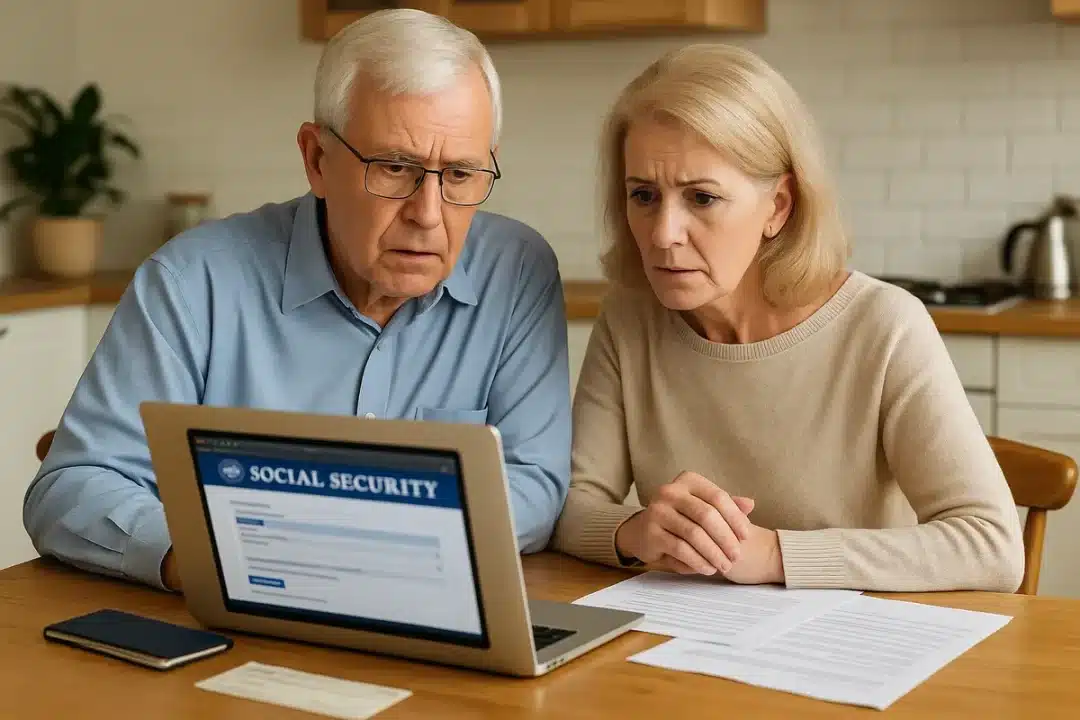
Over half a million Americans will see a major change in how they receive their Social Security and VA benefits starting this fall. The U.S. Department of the Treasury and Social Security Administration (SSA) have announced a full transition to electronic payments by October 2025, ending paper check distribution for most recipients.
The move, aimed at modernizing benefit delivery and reducing costly overpayments, could have significant effects on older Americans—especially those living in rural communities, without access to technology, or who prefer physical checks.
Who’s Impacted by the Social Security Payments Transition?
According to government estimates, approximately 540,000 people still receive their Social Security, Supplemental Security Income (SSI), or Veterans Affairs (VA) benefits by paper check. These recipients—many of whom are over the age of 70—will need to make the switch to one of two options:
- Direct Deposit into a checking or savings account
- Direct Express® Debit Card, a government-backed prepaid card for those without bank accounts
The change is part of a broader effort by the Treasury Department to increase efficiency and security while reducing costs associated with mailed checks, which are more susceptible to fraud, theft, and delivery delays.
“Electronic payments are safer, faster, and more cost-effective,” said a Treasury spokesperson. “This transition is long overdue and ensures taxpayers aren’t footing the bill for outdated systems.”
Social Security: Why This Is Happening Now
This shift to digital payments aligns with recent efforts to address Social Security overpayments, which have surged in the past year. The SSA has come under scrutiny for mistakenly issuing billions in excess funds to beneficiaries—then demanding repayment, sometimes years later.
In July 2025 alone, thousands of recipients received letters about overpayment corrections, leaving many confused or worried about reduced benefit amounts. The government believes that digitizing the payment process will not only increase transparency but also allow for real-time auditing and adjustments.
What Retirees Should Do Next
If you’re still receiving paper checks, here’s how to prepare for the October 1, 2025 cutoff:
✅ Steps to Take Now:
- Check your payment method by logging in to your mySocialSecurity account
- Sign up for direct deposit via your bank or SSA portal
- Apply for the Direct Express® card if you don’t have a bank account
- Ensure your contact information is up to date so you receive important notices
Seniors who do not make the switch in time risk payment delays or interruptions starting in October.
Concerns and Criticisms
Not all advocates are applauding the change. Critics argue that digitizing benefits may leave behind vulnerable populations, particularly seniors without internet access, cognitive challenges, or those in remote areas without banking options.
While the Treasury and SSA have said they’ll provide support for these populations, advocacy groups are calling for increased outreach, including phone hotlines and in-person assistance for affected beneficiaries.
Potential Risks:
- Confusion or missed deadlines for switching payment methods
- Increased risk of fraud if digital platforms aren’t secured properly
- Limited accessibility for low-income or rural seniors
Timeline of Key Social Security Payment Changes
| Date | Change |
|---|---|
| July 2025 | Overpayment corrections sent to thousands |
| August–September 2025 | Final outreach and support efforts begin |
| October 1, 2025 | Paper check phaseout becomes official |
Social Security Changes: The Bottom Line
The move to electronic payments is a major modernization step for Social Security and VA benefit programs, but it comes with challenges. If you or a loved one still receives a paper check, it’s crucial to act now to avoid disruptions in October.
Whether through direct deposit or the Direct Express® card, the sooner you make the switch, the smoother the transition will be.
Stay informed and plan ahead. Social Security remains a lifeline for over 71 million Americans — knowing your payment dates and any upcoming changes is key to staying financially secure.
If you’re unsure about your benefits or need personalized guidance, visit SSA.gov or call 1-800-772-1213.
📌 RELATED READS:
- How Much Social Security Will You Get in 2026? COLA Predictions & More
- How To Sign Up For Social Security Online Services Account
- “Big, Beautiful Bill” Delivers Social Security Tax Break — But There’s a Catch
